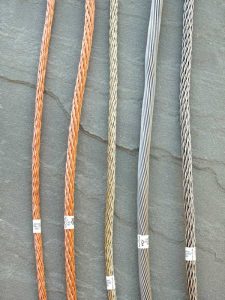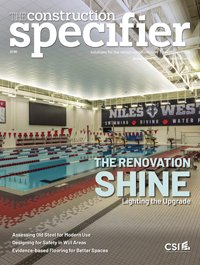Dissecting code language updates to lightning protection systems

Section 2703 Lightning Protection Systems
- 2703.1 General. Where provided, lightning protection systems shall comply with Sections 2703.2 through 2703.3.
- 2703.2 Installation. Lightning protection systems shall be installed in accordance with NFPA 780 or UL 96A. UL 96A shall not be utilized for buildings used for the production, handling, or storage of ammunition, explosives, flammable liquids or gases, and other explosive ingredients including dust.
- 2703.2.1 Surge protection. Where lightning protection systems are installed, surge protective devices shall also be installed in accordance with NFPA 70 and either NFPA 780 or UL 96A, as applicable.
- 2703.3 Interconnection of systems. All lightning protection systems on a building or structure shall be interconnected in accordance with NFPA 780 or UL 96A, as applicable.
The NFPA 780 standard dates to 1904, and has been revised and updated regularly since then, with NFPA’s stated purpose to “provide for the safeguarding of persons and property from hazards arising from exposure to lightning.”
The current standard is 118 pages long and defines and details the components of a LPS, including the diameter, material composition, and cross section area of air terminals, main conductor cables, bonding conductors, etc. It also specifies air terminal height, and material requirements for air terminals, cable, brackets, and even fasteners. The standard also provides great details about air terminal placement, which varies based on the building height, roof slope and/or design, as well as cable placement, and ground rod installation depending on the soil composition.
UL examines LPS components and completed installations for compliance with their standards and has been testing and certifying lightning protection equipment since 1908. UL 96A addresses the minimum requirements for installation of air terminals, cable conductors, fittings, connectors,
and fasteners used in quality LPS.
Current IBC code language and roofing industry concerns
Edge metal components such as fascia, coping, and gutters are required by the building code to be tested to resist specific wind loads. When LPS components are attached to these tested edge components, there is a concern in the roofing community the LPS may alter wind load or system performance of fascia, coping, and gutters. This is critical to the roof design, as the edge system is the roof’s first line of defense when it comes to severe weather. The perimeter of a low slope commercial roof is a critical protection point for roofing assemblies relative to wind pressures and water infiltration. Estimates from insurance carriers including Factory Mutual (FM) indicate the failure of roof perimeters represents nearly 59 percent of roofing system failures in high wind events.
In addition to the edge metal, the roofing system or assembly, which includes all components from the roof deck up (e.g. deck, air barrier, insulation, membrane, fasteners, adhesives), is often tested and approved for use through FM. While not a code requirement, FM wind ratings are based on tested roofing assemblies. Any alterations to the component parts of the roofing assembly, such as insulation type or thickness, deck type or grade, fasteners, etc., can impact the assemblies’ performance, have significant implications for the building owner and nullify the FM rating. As such, adding lightning protection to the roofing system also impacts its FM rating.








